Granite cliffs, white-sand beaches and clear blue waters typify the remote and ruggedly beautiful islands of theRecherche Archipelago, Western Australia.

Aerial photos of the island’s most famous feature, a bright pink lake, are readily available online, but the island itself is far less accessible. Despite the frequent use of the images in tourist brochures, this destination is a long way off the average tourist’s beaten track.
As one of 105 islands and 1500 islets and submerged rocks that form the Recherche Archipelago, Middle Island sits off a remote and exposed stretch of Western Australia’s southern coastline, about 9km from Cape Arid. Powerful Southern Ocean swells, a near-relentless wind, the lack of a nearby harbour or landing facilities and the requirement for hard-to-get access permits make reaching this island an adventure.
After drying our feet and pulling on shoes, our landing party – of parks officers Brendan Williams and Stephen Butler, photographer David Dare Parker and myself – sets off towards a rocky headland with views of the island’s longest beach, which is covered in the fine white sand for which this part of WA’s coastline is known.
At the far end of the bay, partly submerged in the clear blue water, are the iron remnants of tug SS Penguin, one of many shipwrecks in the archipelago. Owned by the West Australian government and used as a survey vessel, the Penguin was, ironically, involved in other rescue and salvage efforts before being grounded in a storm herself in 1920.
It’s speculated that the area’s first wrecks might have been as early as the 1600s, when ships headed for the Spice Islands and were washed far off course by ferocious weather and their crews’ limited navigational abilities.
This story is from the September-October 2018 edition of Australian Geographic Magazine.
Start your 7-day Magzter GOLD free trial to access thousands of curated premium stories, and 9,000+ magazines and newspapers.
Already a subscriber ? Sign In
This story is from the September-October 2018 edition of Australian Geographic Magazine.
Start your 7-day Magzter GOLD free trial to access thousands of curated premium stories, and 9,000+ magazines and newspapers.
Already a subscriber? Sign In

SULAWESI SENSATIONS
There are worlds within worlds and marvels untold waiting to be experienced on Indonesia's remote islands.
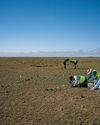
SEARCHING FOR AUSSIE DINOSAURS
Our understanding of where to find ancient life in Australia has been turned on its head by a new appreciation of the country's geology. Now the world is looking to our vast outback as the latest hotspot to locate fossils.
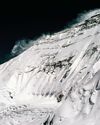
THE HARDEST NIGHT
The first Australian ascent of Mt Everest in 1984 is one of the great feats of mountaineering. Climbed by a small team semi-alpine style, with no bottled oxygen, via the Great (Norton) Couloir, it remains unrepeated 40 years later.
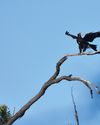
WEDGE-TAILED WONDER
The chance discovery of an eagle nest leads to an extended vigil observing normally hidden behaviours of one of nature's supreme winged marvels.
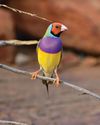
BURDENED BY BEAUTY
Northern Australia's Gouldian finch survives in huge numbers in cages around the world, but its wild population continues to struggle.
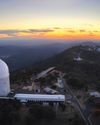
A TELESCOPE FOR A GOLDEN AGE
After a stellar 50 years as one of the country's major scientific assets, the AAT continues to play a major role in keeping Australian astronomy on the world stage.
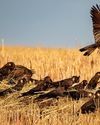
COCKY WHISPERING AT COOMALLO CREEK
This patch of remnant bush on the edge of the West Australian wheatbelt is a place loved by one of Australia's rarest bird species and the man who has studied the site for more than 50 years.

A PIONEERING PAIR
Louisa Atkinson and her mother, Charlotte, were among Australia's earliest authors, and pioneers in women's rights.
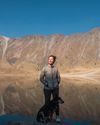
THE LONGEST WALK
Lucy Barnard is walking from Argentina to Alaska -the length of the Americas - on an extraordinary journey of endurance and adventure.
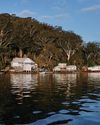
SECLUDED, BUT NOT ALONE
In an era of heightened social isolation, where many of us lead lonely lives, Dangar Island offers the chance to be part of a supportive, connected community.